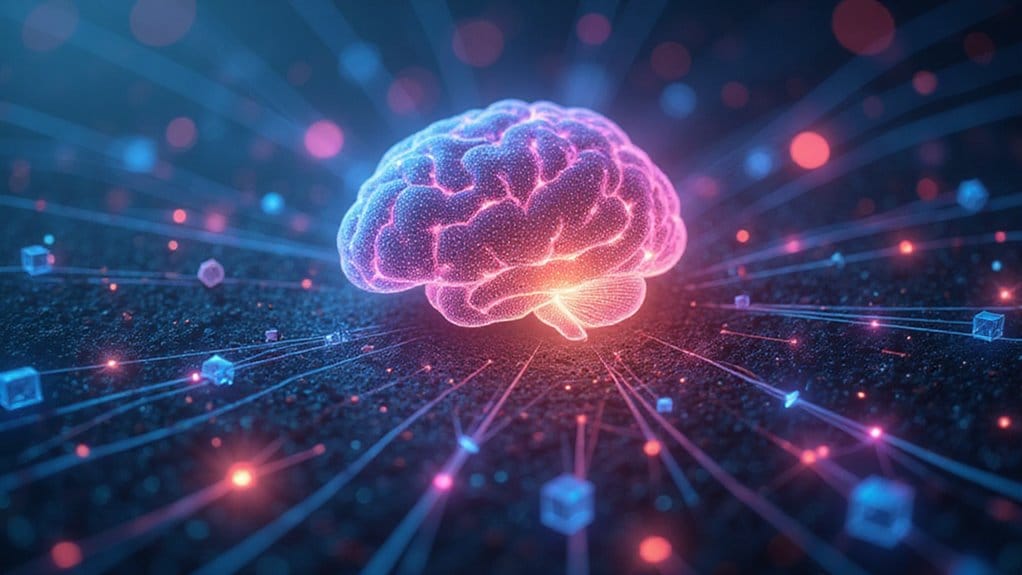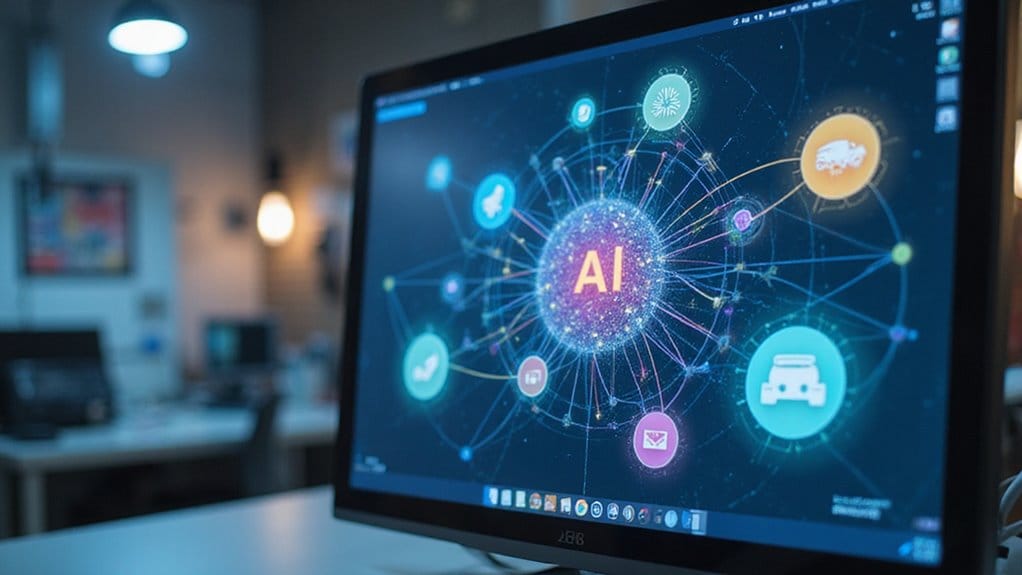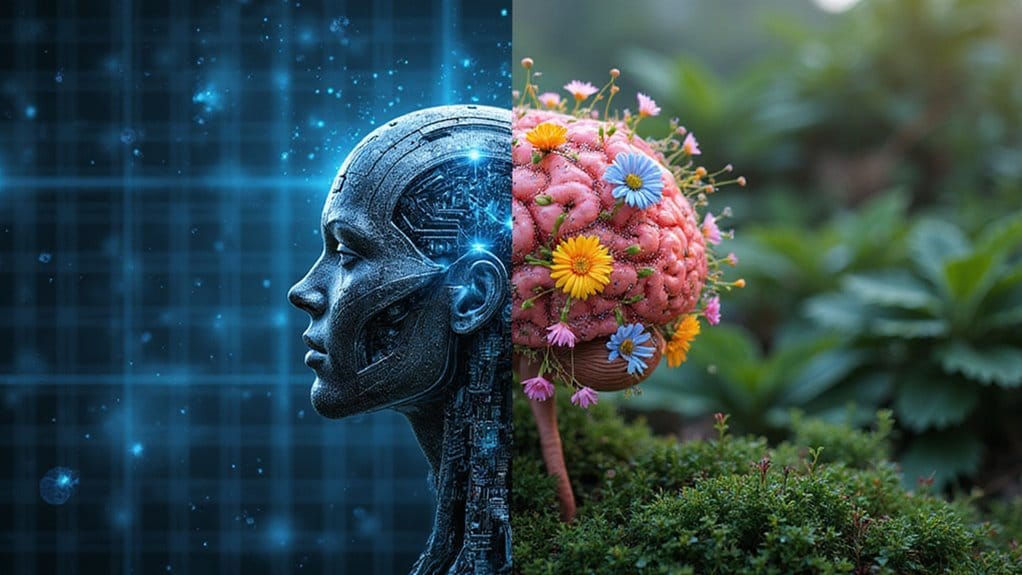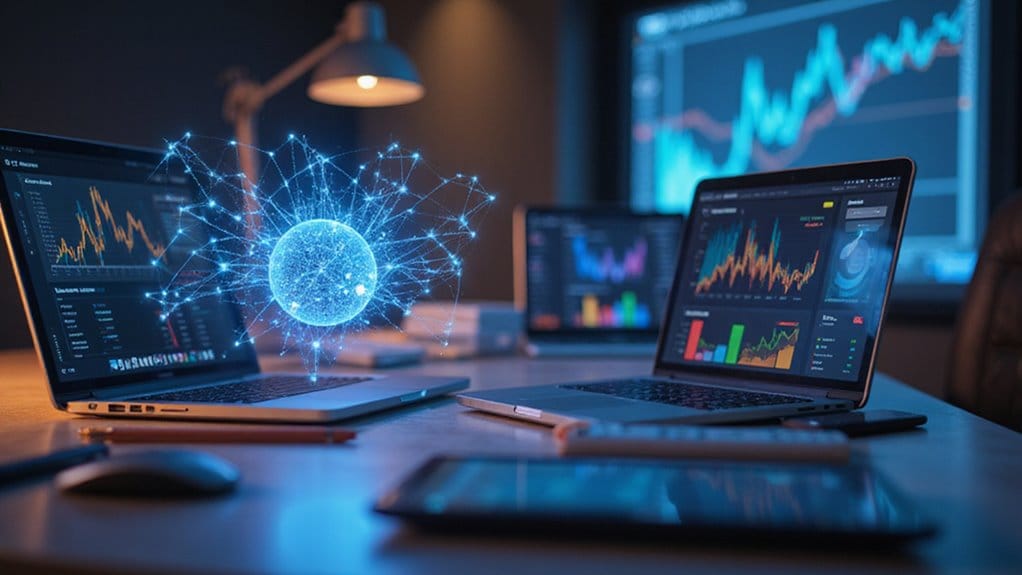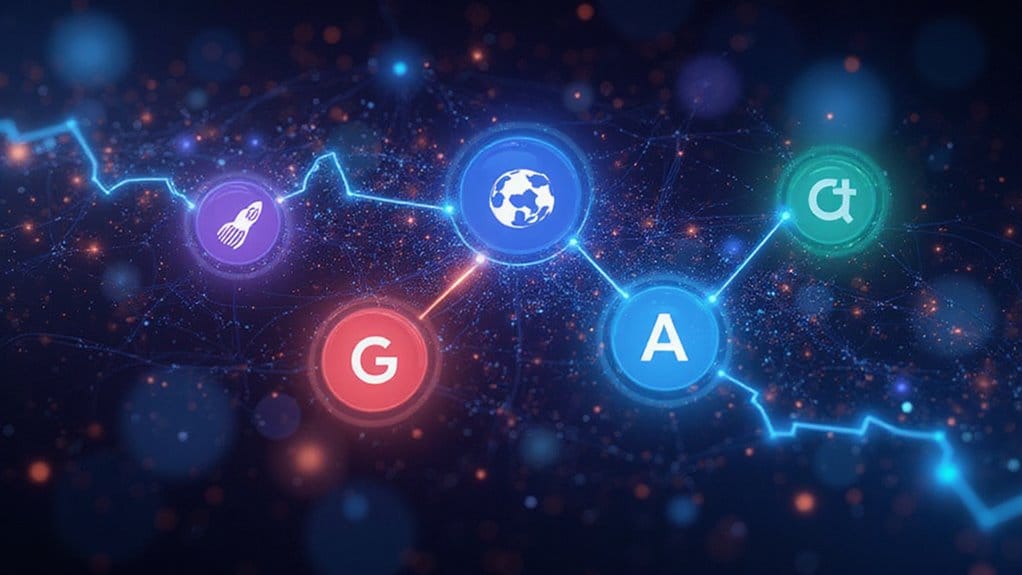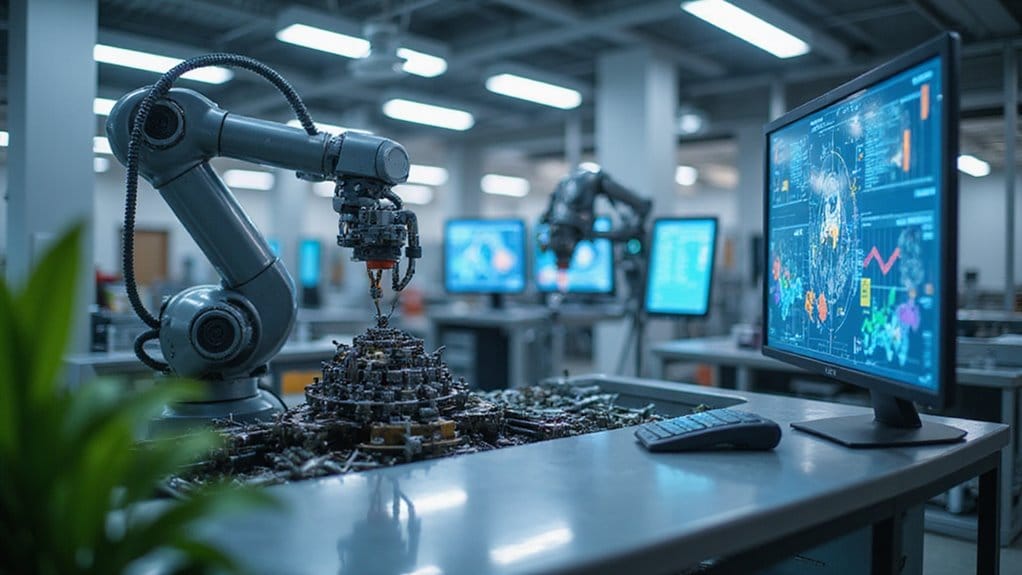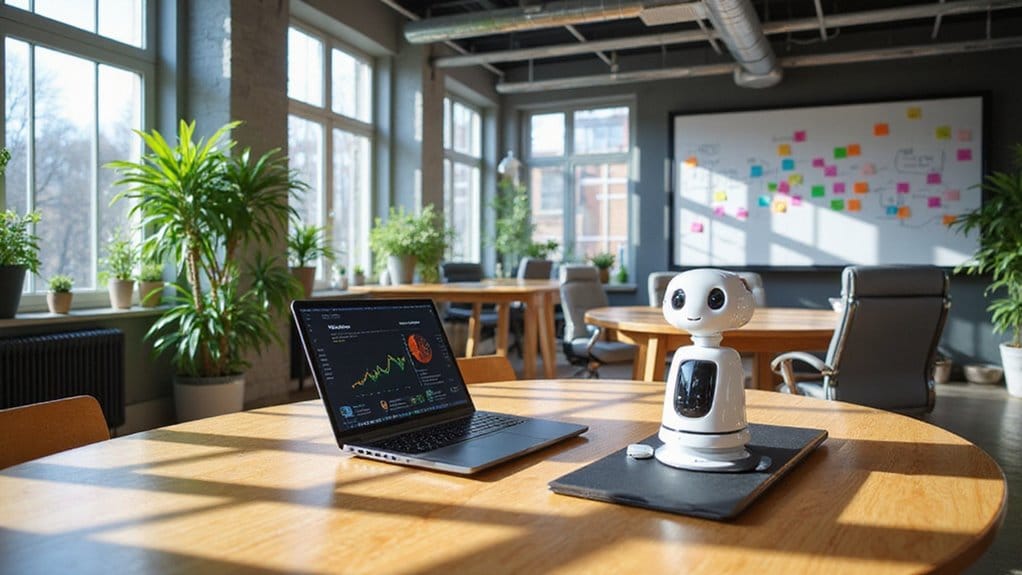AI transforms raw data into smart predictions through a step-by-step process, much like piecing together a jigsaw puzzle. First, it collects varied data—text, images, and sounds—then cleans and organizes it. Next, it picks the right algorithm, which is essential for accurate predictions. After training the model, it’s evaluated to guarantee accuracy, with feedback helping it improve continuously. Keep this in mind: understanding these basics is key, and there’s a lot more to uncover!
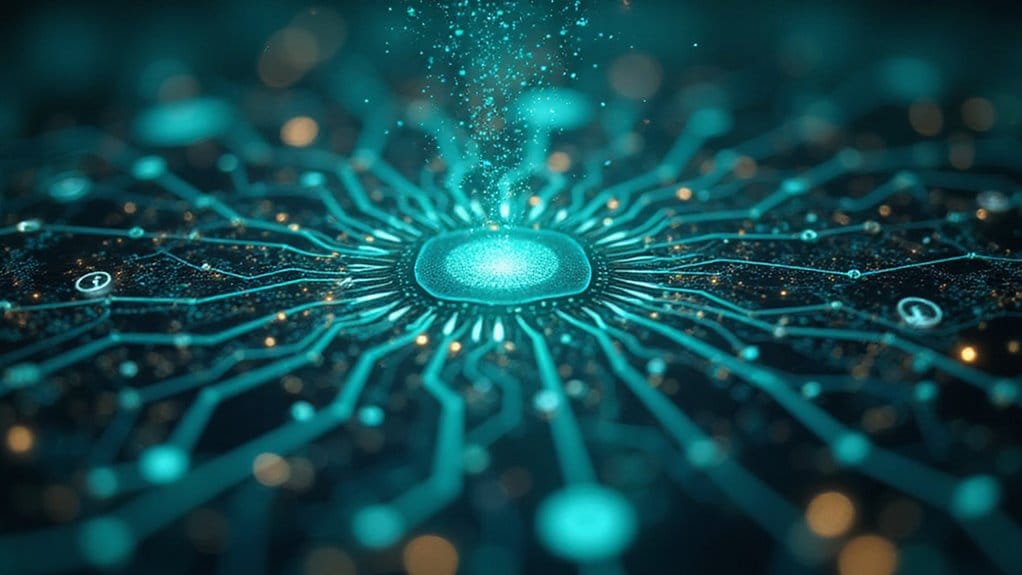
How AI Works
Artificial Intelligence (AI) isn’t just a buzzword; it’s a game changer, and understanding how it works is fundamental. Imagine trying to solve a puzzle without knowing what the final picture looks like—that’s what AI does when it starts with raw data.
First, it gathers information from various sources, like text, images, and audio. But hold on! Before diving in, the data must undergo cleaning and data preprocessing. This is where errors get scrubbed away and the data is transformed into a usable format. Think of it as washing your hands before a meal—it’s just good practice.
Before AI can work its magic, it must first clean and preprocess data—like washing your hands before a meal!
Once the data is primed, it’s time to choose the right algorithm. This decision is vital because, depending on the task—be it natural language processing or recognizing images—the algorithm will determine how effectively the AI learns. Narrow AI is often what we encounter in specific applications, focusing on narrow tasks rather than broader intelligence.
Now, here comes the fun part: model training. The AI gets fed the preprocessed data, and just like a child learning from experiences, it begins to make predictions. But wait! Before you pop the confetti, the model must go through model evaluation. This step tests its performance and accuracy, ensuring that it’s not just guessing wildly like someone on a trivia night. The evaluation process measures performance using performance metrics that are critical for assessing the model’s success.
After model evaluation, the AI either shines or needs a little tweaking. If it’s not performing well, adjustments are made, reflecting the outcome stage of the process. It’s all about refining and making it better.
And just like in life, feedback is key—AI thrives on it.
Frequently Asked Questions
What Are the Ethical Implications of AI Technology?
The ethical implications of AI technology are serious and multifaceted.
First, consider bias mitigation—how can we guarantee fairness?
Next, think about privacy concerns; your data isn’t just a fun fact.
Accountability frameworks are essential for decision transparency; who’s responsible when AI makes a mistake?
Don’t overlook societal impact; automation can disrupt jobs.
Finally, human oversight is vital—machines need a guiding hand.
How Does AI Impact Job Markets and Employment?
AI is shaking up job markets like a snow globe, causing job displacement in routine roles.
Sure, it makes life easier, but don’t be surprised if your entry-level gig vanishes.
Workers must embrace skill transformation—think coding, data analysis, or even AI ethics.
New jobs pop up, but they demand a tech-savvy mindset.
So, adapt or get left behind!
The future’s here, and it’s powered by AI.
Get ready to evolve!
Can AI Develop Emotions Like Humans?
Can AI develop emotions like humans? Not quite!
While it excels at emotion recognition—like reading your mood from your text—machine empathy is a whole different ball game.
AI lacks true feelings; it mimics responses without real emotional depth.
So, if you’re looking for a shoulder to cry on, remember, it’s just a very smart calculator.
And trust me, emotional connections with AI can lead to a dependency you might regret later!
What Are the Limitations of Current AI Systems?
Current AI systems face significant hurdles.
Data bias is a sneaky enemy, skewing results and creating unfair outcomes.
Then there are interpretability issues—good luck figuring out how decisions are made! Want clarity? You won’t find it here.
These limitations mean AI can’t think like a human, lacking intuition and empathy.
How Is AI Regulated in Different Countries?
AI regulations vary wildly across the globe. The G7 pushes for compliance frameworks that respect human rights, while the EU’s AI Act aims for a human-centric approach.
Need country comparisons? Look at Spain’s pioneering supervisory agency versus the US’s chaotic patchwork of state laws.
China’s strict governance contrasts with Japan’s soft law style.
